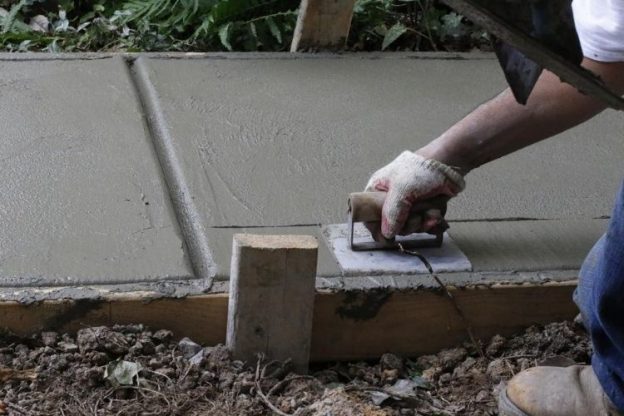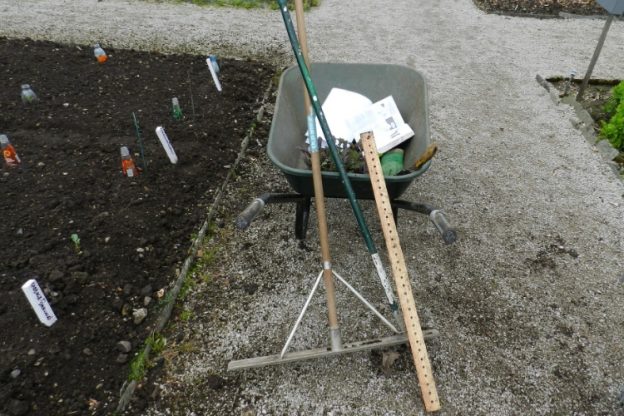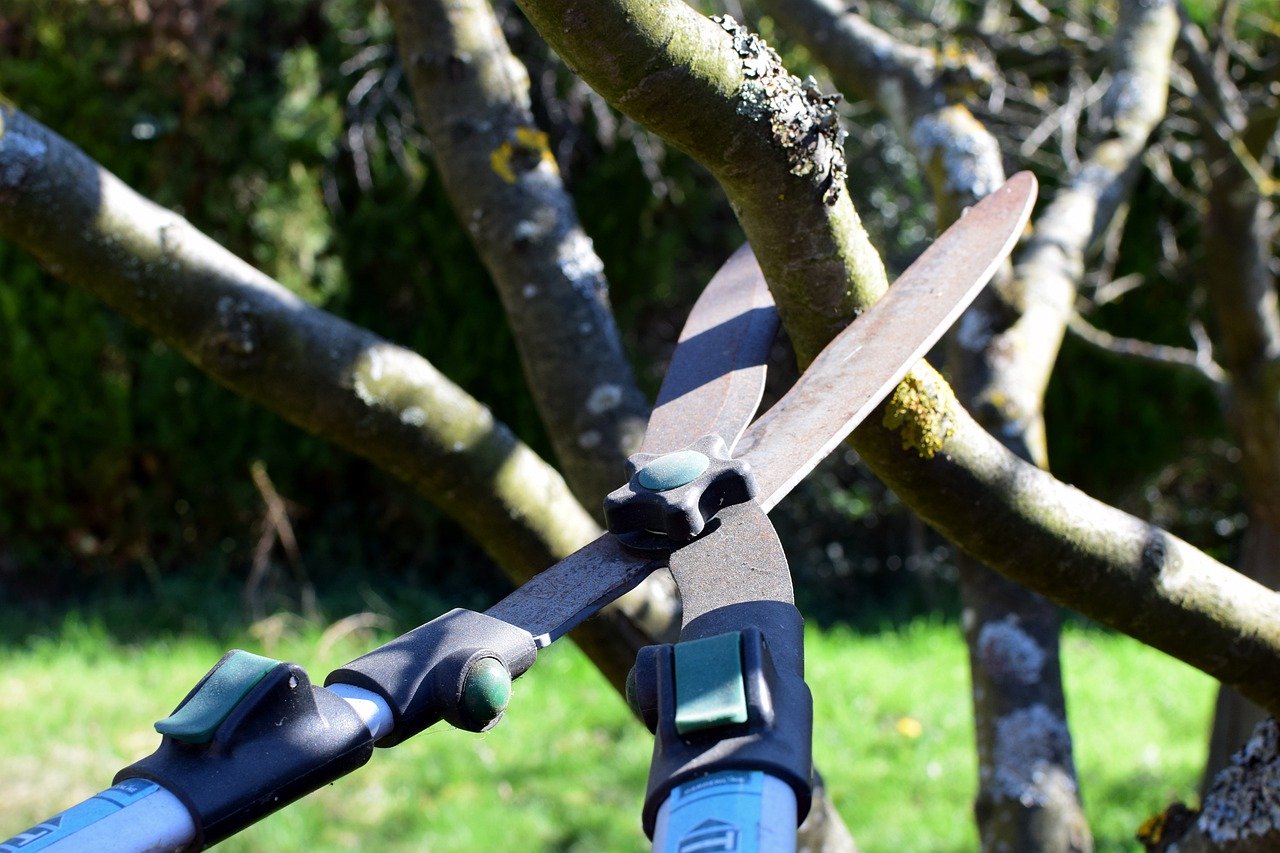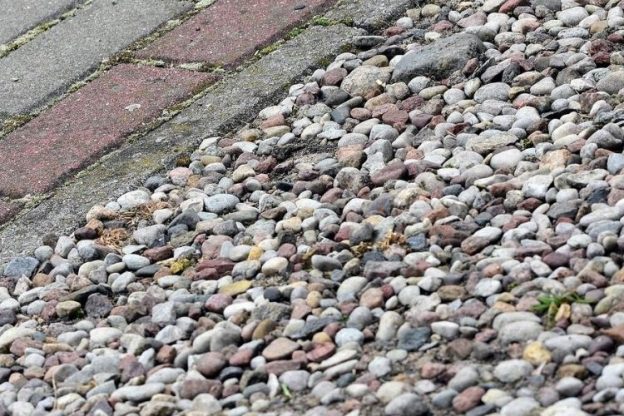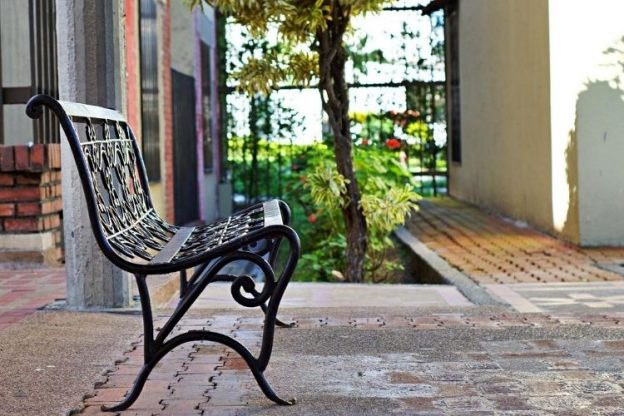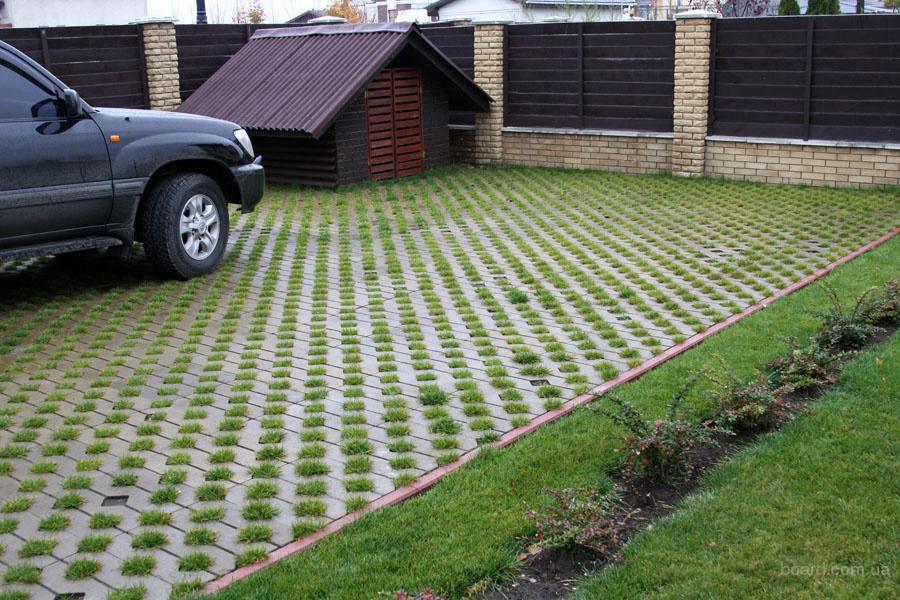A garden driveway or concrete walkway is a common element of a personal plot. In addition to aesthetic functions, concrete paths are needed to comfortably move not on open ground, but on a hard, clean surface. They are often made by hand.
Material, tools
Concrete is one of the most practical and durable materials: it can be given any shape, color, embossed surface, it does not crack, does not crumble, frost and water resistance. For kneading, you need the following materials:
- water, cement and sand;
- gravel, crushed stone, pebbles;
- stones or decorative items;
- pigment (if you need to add color) and plastic wrap.
You will also need a wide range of tools:
- concrete mixer or container for mixing the solution;
- a sieve for sifting sand or a container for washing it;
- shovel, stirring paddle, planks or formwork;
- hammer, nails to create formwork;
- rubber mallet, stakes and lines for marking;
- long rule, building level;
- rammer, trolley, trowel, buckets;
- grinder, steel sheet, reinforcement, steel mesh or fiber;
- knee pads, gloves.
Some tools and devices may not be needed. For example, if the sand is clean, no sieve is needed.
General requirements
Correct foundation is essential. So, for clayey soils and under heavy load, a depth of about 50 cm for the base and a sand cushion of 30 cm are recommended.For heavy soil, a sand-gravel mixture of 30 cm is suitable, in it the sand layer should be 15 cm.Each layer of gravel, crushed stone , the sand is well tamped and watered.
The bottom of the trench is compacted and geotextiles are laid. It is also laid between layers – this increases the strength of the base and its service life, since the material is specially created for construction in permafrost conditions. It is very strong and prevents the washing out of sand, subsidence, excludes the growth of weeds and passes moisture well.
For paths made of concrete slabs, sand is taken for the base with a fraction of 0-7 mm, it is poured with a layer of 5-7 mm and leveled. If it is necessary to make gaps of 2–3 cm between the plates, then they are covered with fine-grained sand, rammed and spilled with water. Concrete paths must have a slope so that water does not linger on them. To do this, make a base with a slightly convex profile – it is enough to make a slope of 1-2 cm per 1 m of the track axis. They also make special drainage. To determine the size of the steps, there is a rule: two step heights plus the depth are equal to a step of 60–70 cm. The walkway can be created from slabs 40 × 40 cm at a step distance between the centers of the slabs.
Track creation process
Let’s describe the standard scheme for creating a track and material consumption. The parameters of the base and the solution vary depending on the soil of the site.
Foundation preparation
The concrete must be placed correctly, that is, on a sand and gravel layer. Although sometimes, when there is sandy soils, they are simply laid on a well-tamped pillow, while the consumption of materials is reduced. They begin to work with the creation of markup. Pegs are driven in along the perimeter of the future track, and the cord is pulled. The top layer of the soil is removed. For pedestrian paths, 20 cm is enough, if cars will drive on it – 30 cm, for heavy and loamy soils – 40 cm. Then geotextiles are laid on the bottom and slopes.
Half of the trench is covered with sand. If there are several layers, then a third. In any case, for a sandy layer, preferably at least 5 cm. It is well rammed, spilled with water. The ideal option is to deepen the trench and use several layers: sand / gravel (crushed stone) / sand. Each layer is overlaid with geotextiles.
If there are multiple layers, then the next one should be gravel. Crushed stone with a fraction of 10–20 mm is taken, which must be well compacted. In order to properly concreted the track, its dimensions or slabs in m2 and the approximate proportions and consumption of the constituent concrete are calculated.
Form for concrete slabs, formwork
For making slabs with your own hands, special plastic forms are sold. If they are not there, then you can do it yourself. Plates are often made square with sides of 30-50 cm. For them, wooden forms are created from bars with a cross section of 50 × 50 and sheets of steel. In total, their volume should be equal to concrete in one batch. The bars are knocked down with nails, polished from the inside and applied with oil paint – so the plate will not get stuck.
Simplified manufacturing method: a form without a bottom on a plane covered with a film. Concrete walkways can be made using formwork, a temporary timber structure that shapes the mortar. It is made from a board 15–20 mm wide, which is equal to the height of the track. The path should be slightly higher than the ground (4–5 cm) and with a slope of 1 cm to one or both sides.
The boards are fixed at the edges of the trench – they are pressed against the walls and attached to the marking pegs; the latter should be on the outside. The edge of the boards from below is fixed by means of pegs, and the top – with transverse jumpers, they are nailed to the edges from above – this will exclude the expansion of the structure.
It is necessary to separate the slabs – too large ones crack. To do this, after one and a half meters, dividers are mounted: metal plates, siding trims, wooden or plastic strips. If they need to be removed, then before installation they are lubricated with any grease (used machine oil).
Calculation of the amount of concrete
The calculation is done using this technology. The area of one slab is determined (in m2). The m2 value is multiplied by its height. The result is multiplied by the required number of plates. When filling the site with a single mass, the area in m2 is multiplied by the thickness of the filling. If the slabs are laid with gaps, then 5-10% is subtracted from the result.
The standard width of the path in the country will be 0.8 m with a thickness of 5-7 cm, for a path for a car you need 3 m with a thickness of 10 cm. Taking this into account, it is easy to calculate that the consumption of the mixture per 1 running meter of the footpath is 0.5 m3, for a path for a car consumption – 0.3 m3 of concrete. From this it follows that 1 m3 of mortar is enough for 20 m2 of a footpath or 3.3 m2 for a car.
Composition calculation
The components and proportions are measured with buckets. A standard bag of cement has 50 kg or 38 l. The best water consumption will be in the proportion of 1 part water to 4 cement, but as you stir, you can add a little more water to the composition for better plasticity. The solution and consumption of ingredients for paths without heavy loads (normal path in the patio, in the country): ½, 5/4 (cement / sand / gravel). In buckets, the proportion will look like this (per 1 m3 of mixture): 18 – cement (4.7 bags), 45 – sand, gravel – 70.
Car track: 1 / 1.5 / 2.5 (cement / sand / gravel). Consumption in buckets: 28 (or 7.3 bags) / 40/70. A plasticizer is also added, for example, SP-1, a dye (1-2% by weight of the solution). There is one more composition of durable concrete mortar:
- cement M500 and above – 1 part;
- sand – 3 parts;
- crushed stone – 1 part;
- water-repellent additives.
Mixing concrete
If there is a small concrete mixer, it simplifies the work. If it is not there or the amount of concrete is small, then you can mix it by hand. Concreting tracks is carried out in several stages. To mix the mortar, you need a trough, a steel box or just a flat asphalt area, an iron sheet. You can use a construction mixer, a hammer drill with a nozzle.

This technology is standard. First, gravel and sand are mixed, then cement is added – a gray mass is obtained. A deepening is made on its top and water is slowly poured in (half the calculated volume), raking the dry mixture from the edges into the middle. The mixture will become damp. Then they make a depression at the top again and pour out some of the water. Do this several times until the composition becomes the desired consistency.
For the manufacture of the mortar, cement of a brand not lower than M300 is recommended. It is best to use river sand – it is clean. It is advisable to rinse the quarry and filter through a sieve. Crushed stone can be taken 10–20 mm in size, the best is granite, it is frost-resistant and durable. For heavy loads, a coarse fraction of 40 mm is suitable.
The thicker the composition, the stronger the concrete, but then it must be well tamped. An excellent solution would be to add a plasticizer – it will make hard concrete more plastic and flowable with less water consumption, which makes it less durable. This solution will fill all the cracks.
Reinforcement and pouring
A garden or courtyard path made of concrete should rise by 3-5 cm. If there is a desire to give the slabs special strength, then reinforcement is used:
- the form is filled in half;
- put reinforcement. Its role is played by steel rods with a cross section of 5–8 mm or a finished mesh. Fiber from the polymer is also used, which is added when mixing concrete.
The solution is leveled and kept for 3-4 days, regularly pouring water or covering with a damp cloth. When reinforcing, you can restrict yourself to a slab thickness of 6–10 cm: such a device excludes cracking. Otherwise, the thickness of the slab is at least 10-15 cm.
Pouring and ramming the tracks with concrete occurs in stages from separator to separator. The solution must be poured all at once to the edges of the formwork, the prepared mixture cannot be left for later – this is a guarantee of its cracking.
The top layer is leveled with a rule or a flat board, which rests on the edges of the formwork and travels along them. The rule is to make movements towards themselves along the path, removing excess mixture. When leveling, remember the slope (1 cm by 1 m). You will also need manual ramming, which should be carried out before the appearance of the cement milk.
Then the mixture is pierced with a pin, a piece of pipe – this is necessary to remove air and increase the density. For this, a vibrating screed is also used. If pebbles have turned out, then they are rolled with a roller. After that, the concrete is covered with a film from debris, rain, to preserve moisture (rapid drying leads to cracking). So, the concrete path dries for 4 days, for 5 – the formwork is removed. Until it is completely dry, it is poured with water, and after drying, the sharp edges are polished with a grinder.
Laying slabs
If the path in the country will be exposed to heavy loads (bicycles, cars, a cart with a load), then it is advisable to leave a gap of 2-3 cm between the plates. You can also leave a gap of 5-6 cm. You can also place the plates at intervals of 1 step. Laying process in stages:
- pegs and cords make markings;
- remove the soil layer by 10 cm;
- the trench is covered half the depth with sand;
- the plates are laid on a leveled, rammed base. It is important that each slab lies on the sand
- cushion with its entire plane and is at the level of other tiles;
- hammer slabs across the board for a good fit;
- sand is poured into the cracks. Can also be decorated decoratively.
Plates look good in the country, between which lawn grass grows. Such a path is made on the finished lawn: the sod is cut out, the bottom of the hole is filled with sand so that the slab is flush with the grass.
Decorating
For a path in the country, a beautiful view is very important. To make it beautiful, decorative, pigments are used (ocher, umber, etc.), polished by impregnation, and drawing with sharp objects is applied.
You can decorate using pebbles, shards of tiles, even buttons. They are embedded in the concrete surface. To do this, a paper sheet is placed on the bottom of the mold, decorative elements are attached with glue and poured with a solution. The paper is washed off the finished plate with water.
Impregnation with liquid glass (fluoride silicate, sodium, adhesive) is also popular, which gives a spectacular shine. All impregnations are applied by brush or spray. If desired, you can make large veins and fill them with turf, create roughness with a stiff brush or other devices. Cladding with tiles or marble is in great demand.


